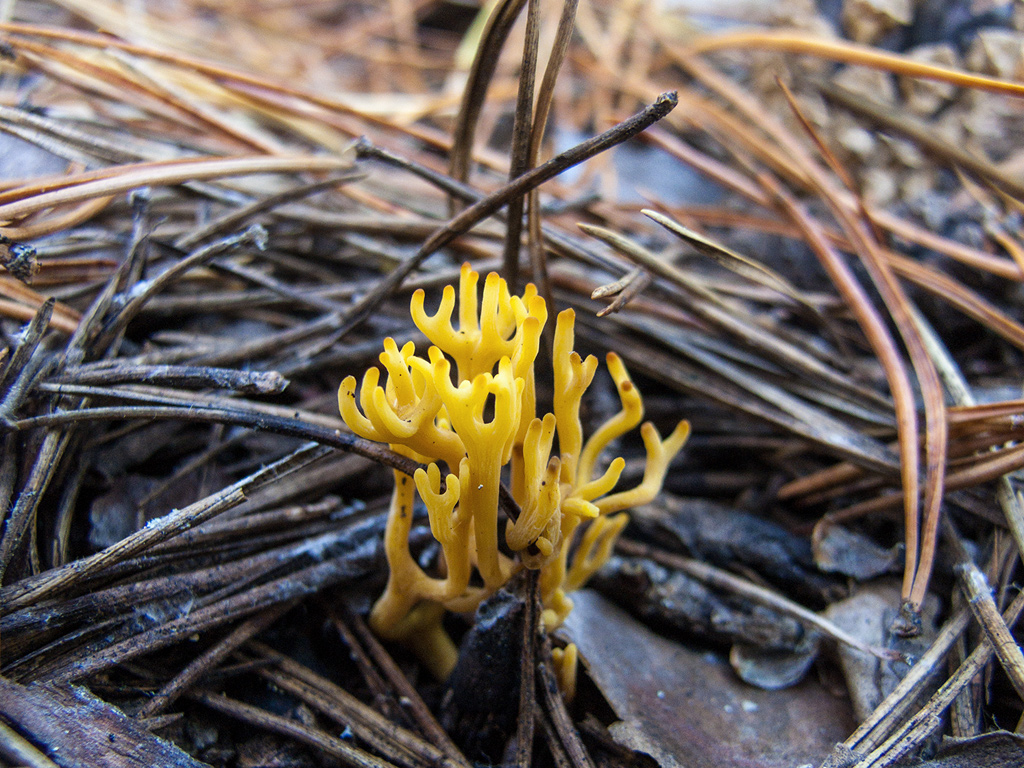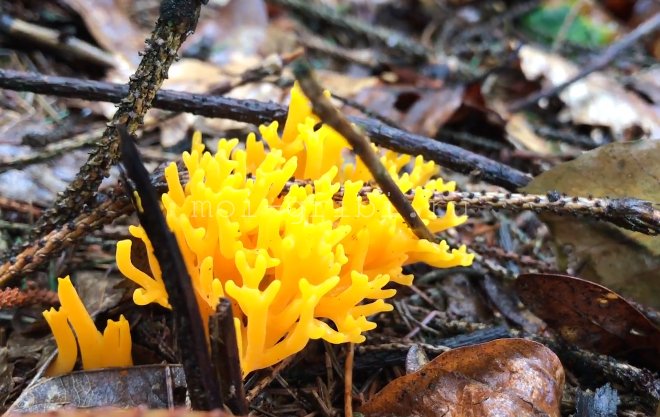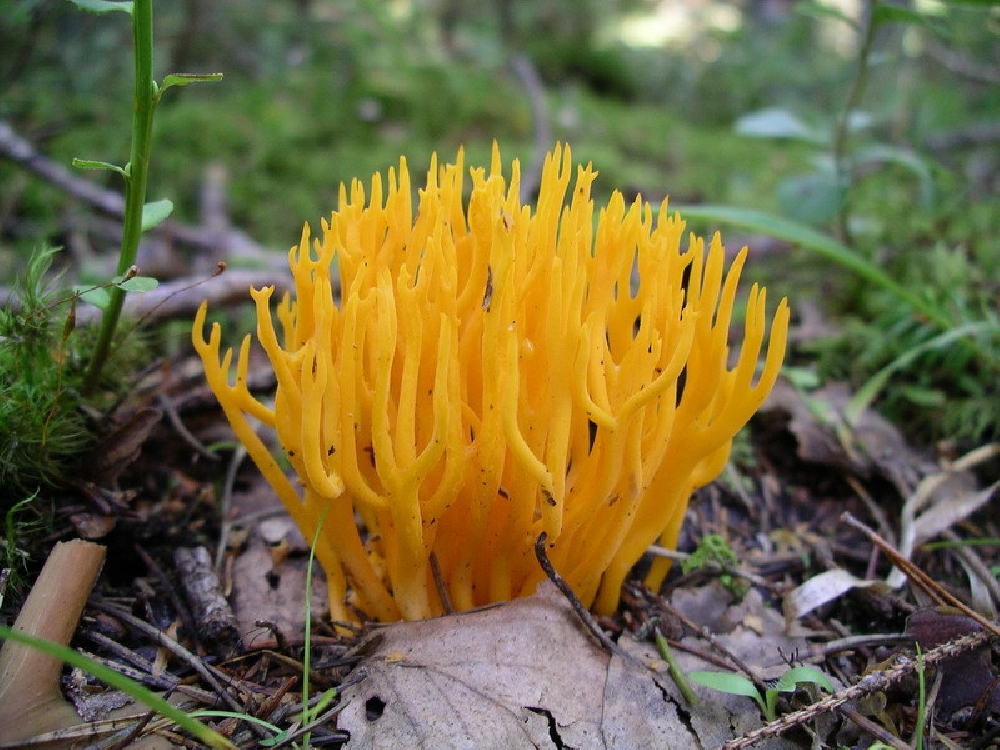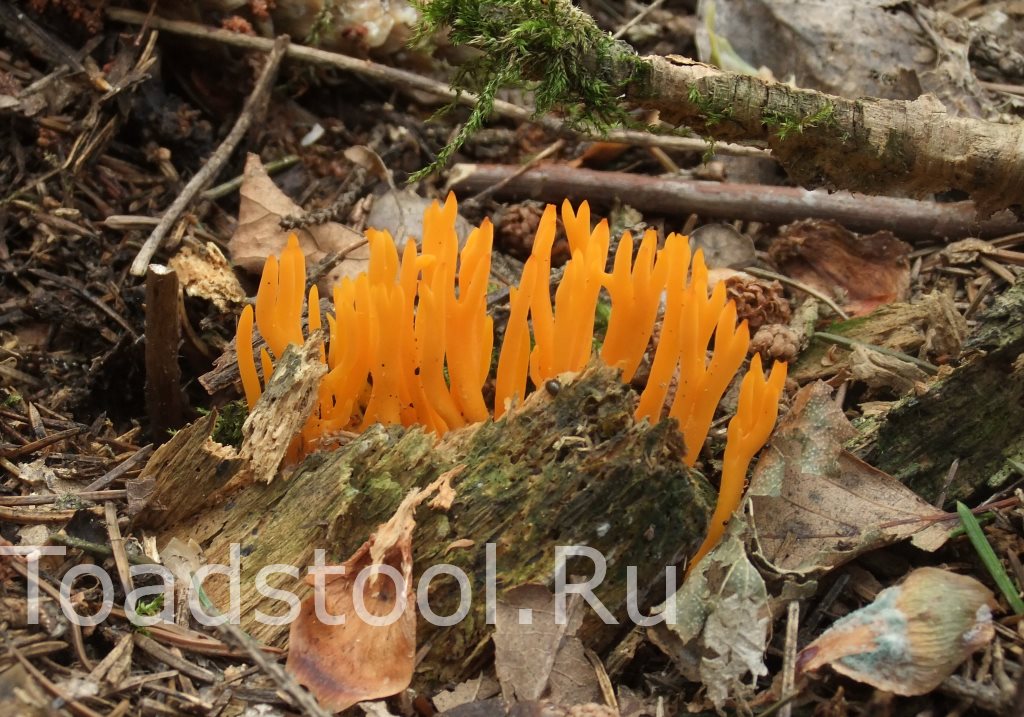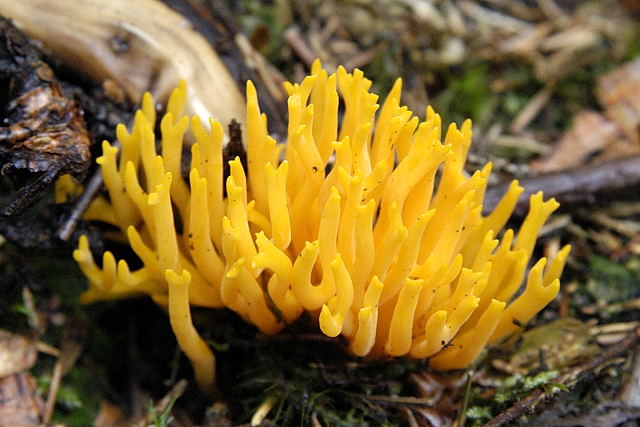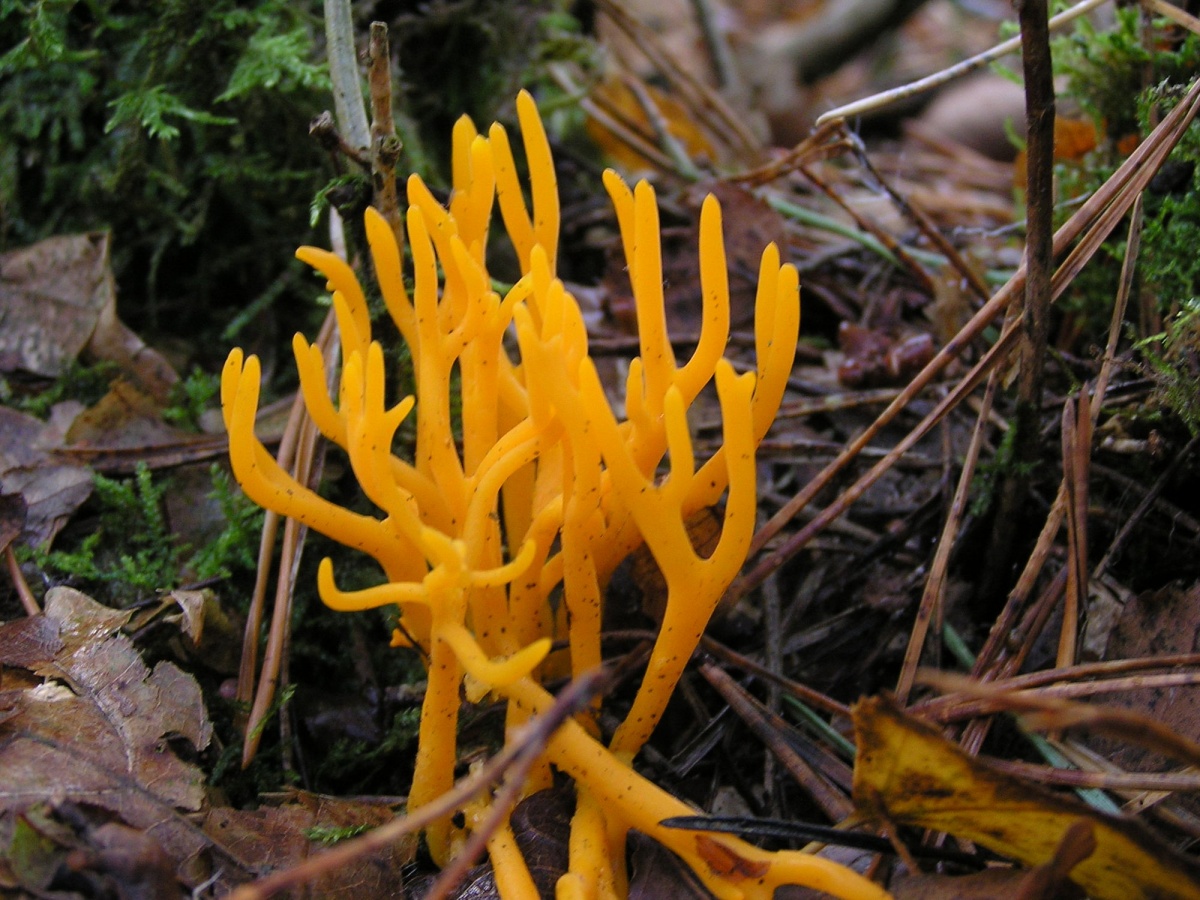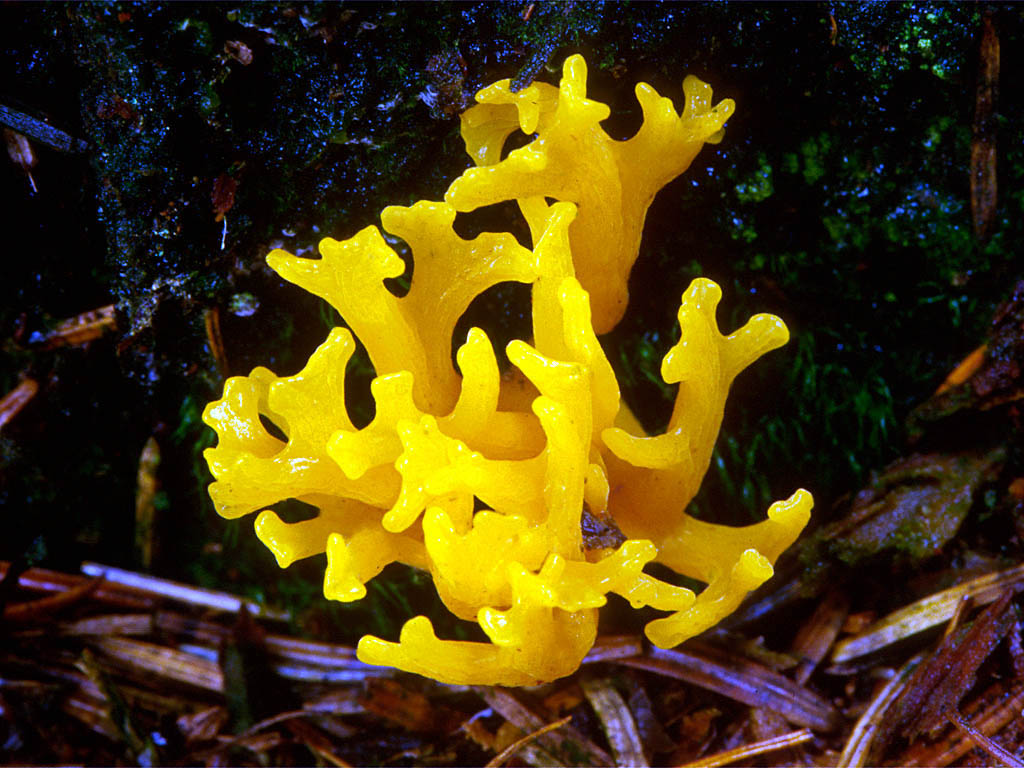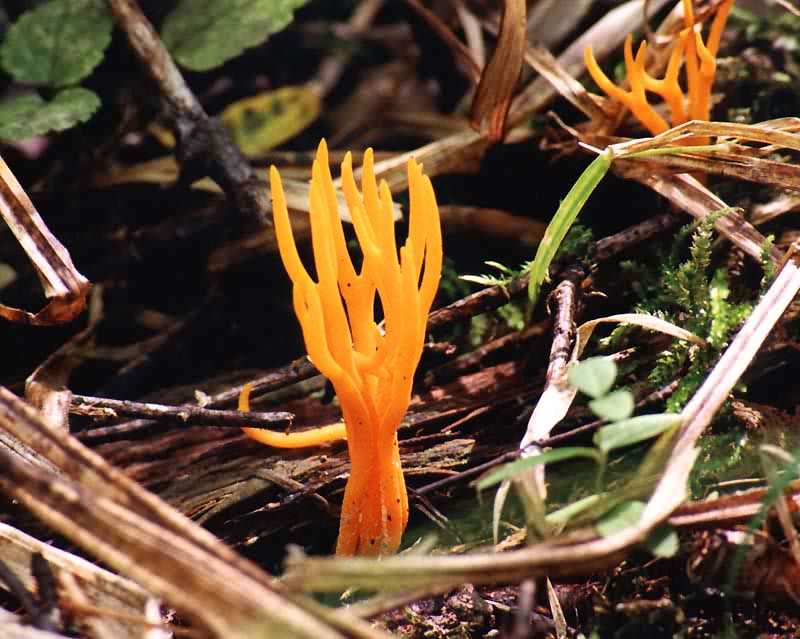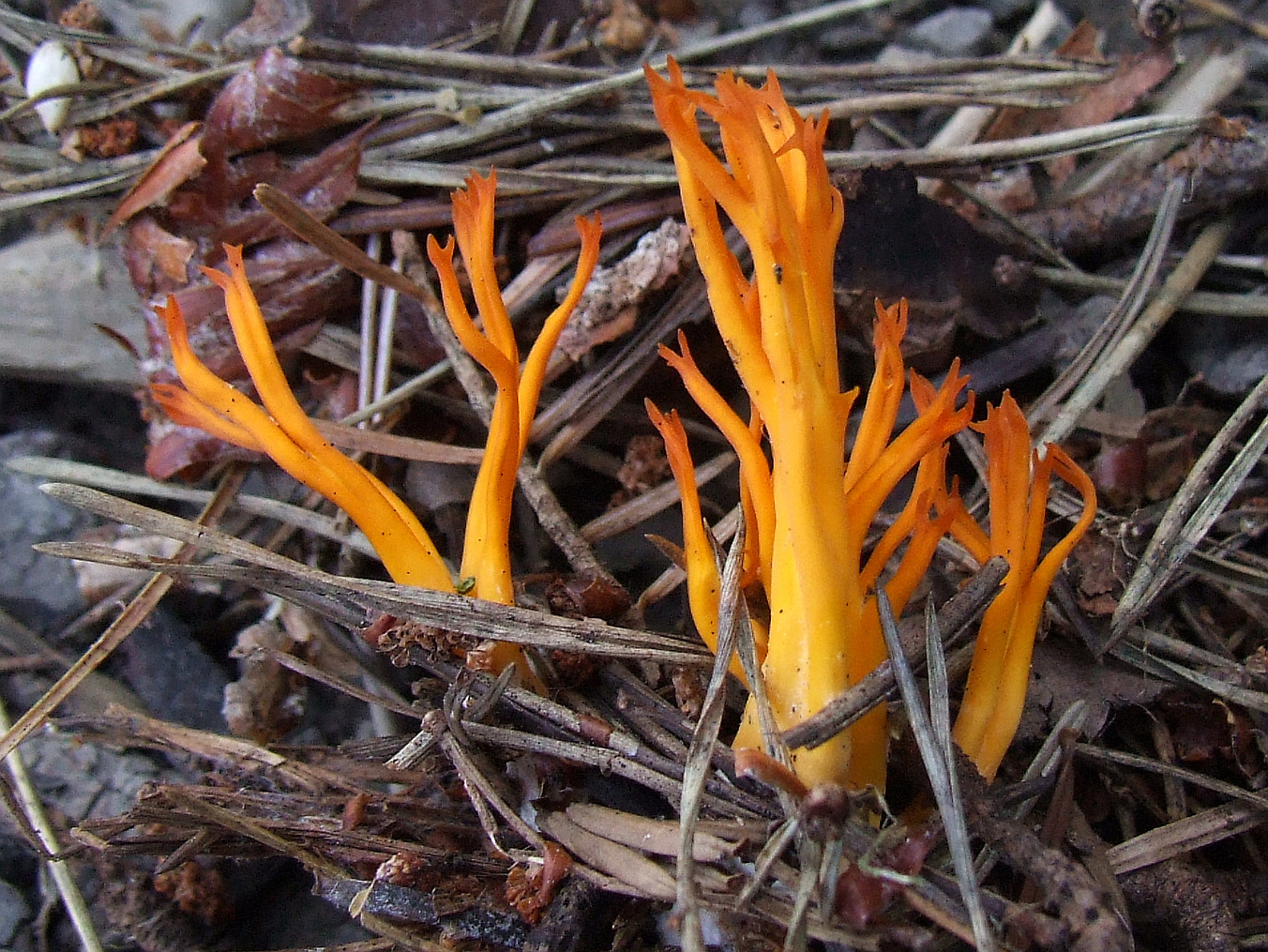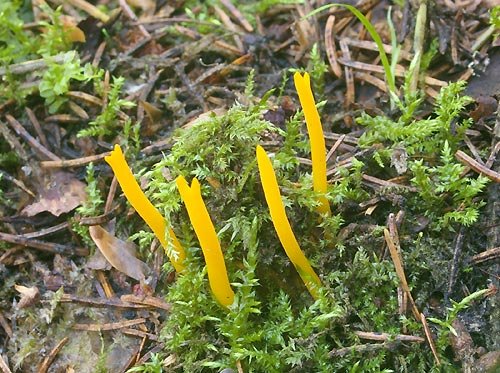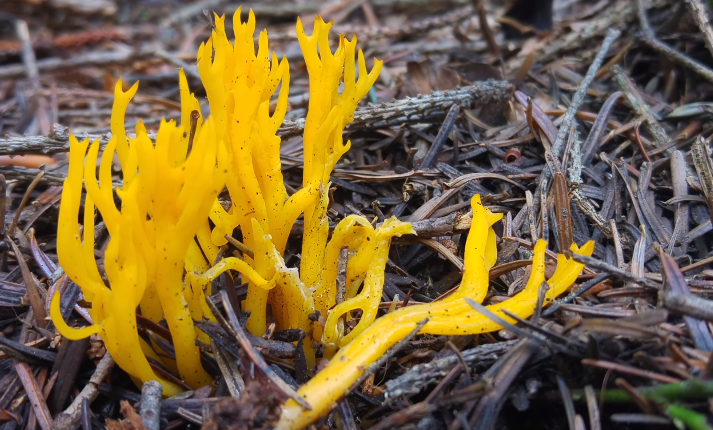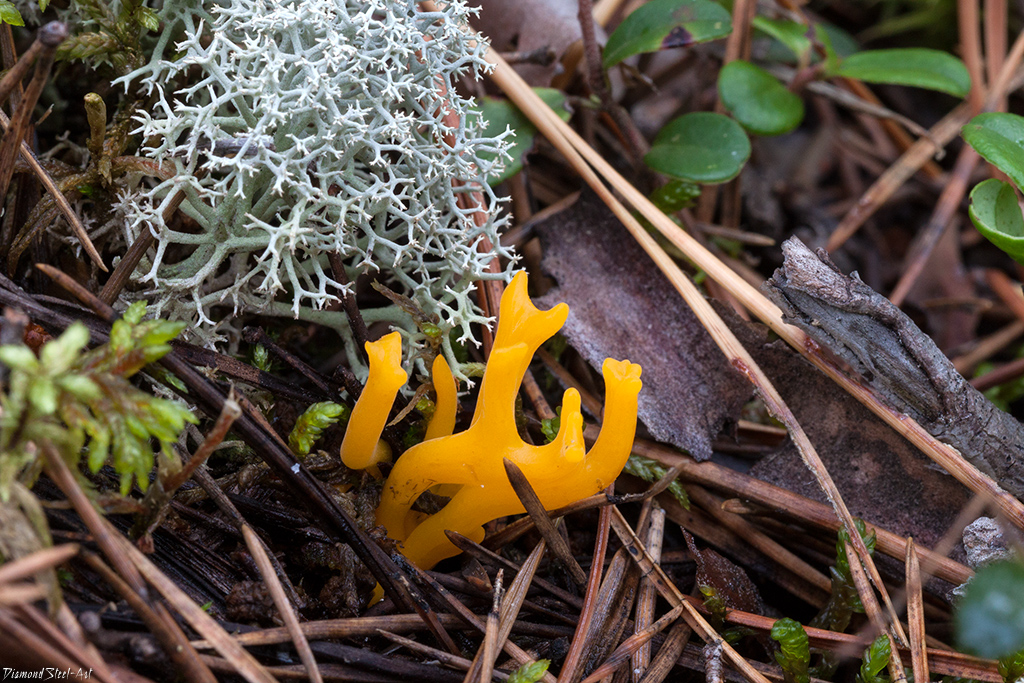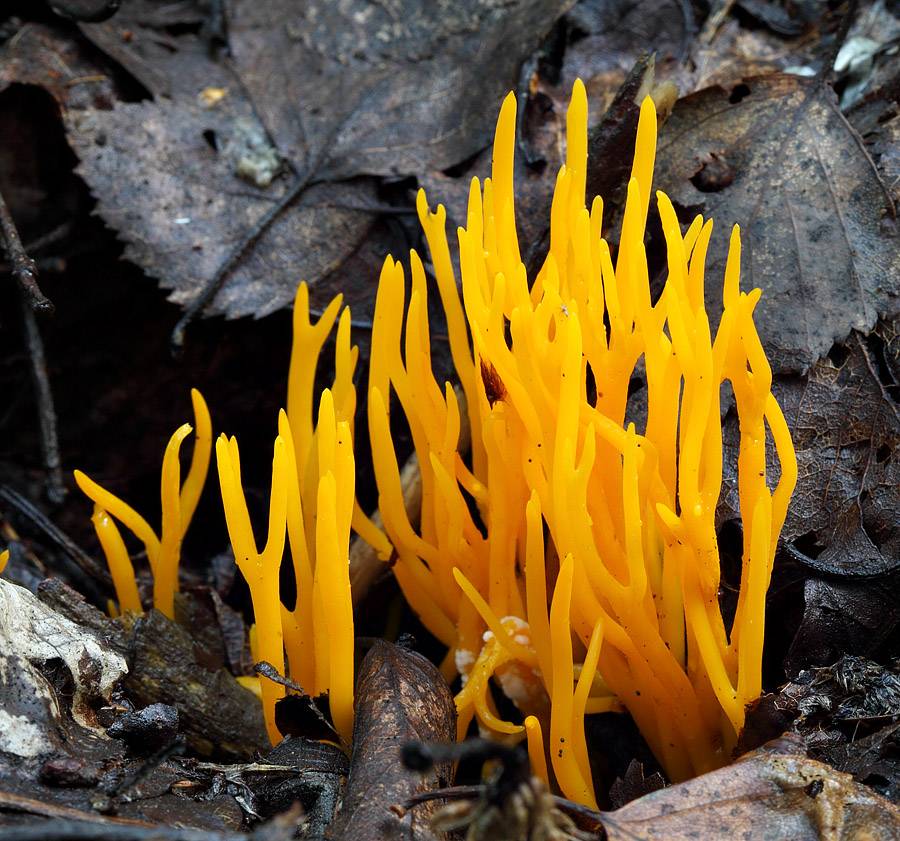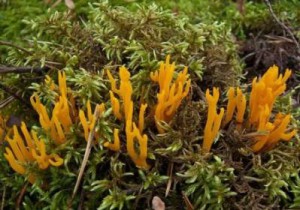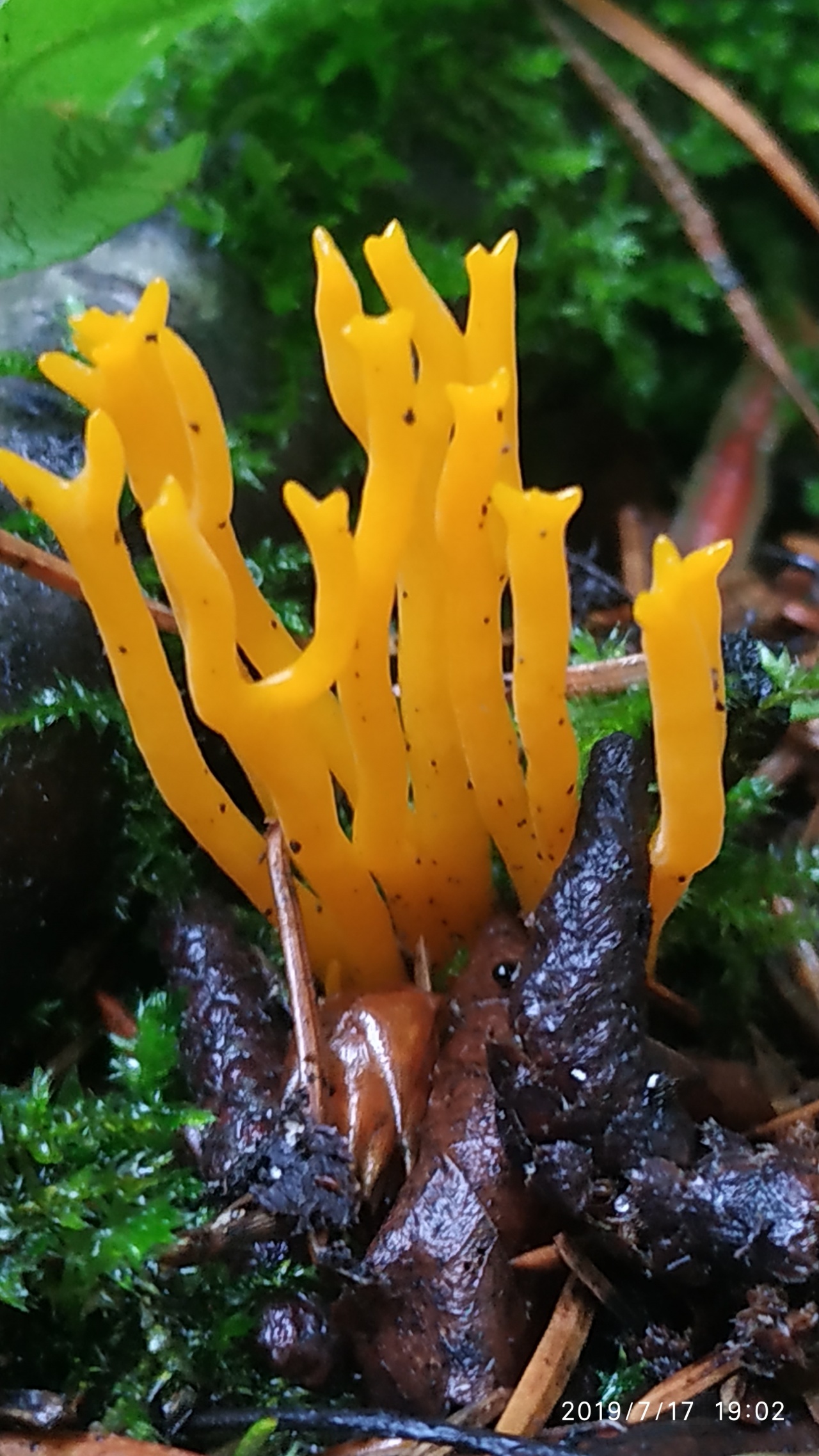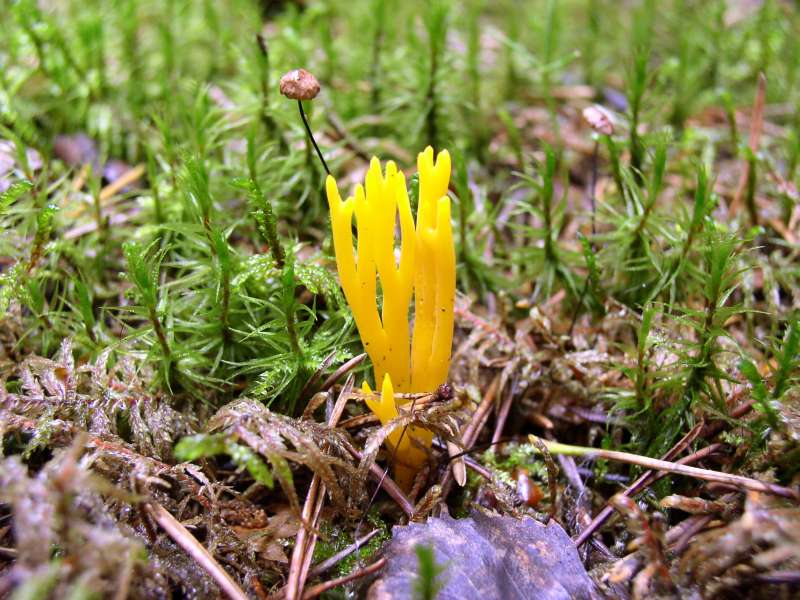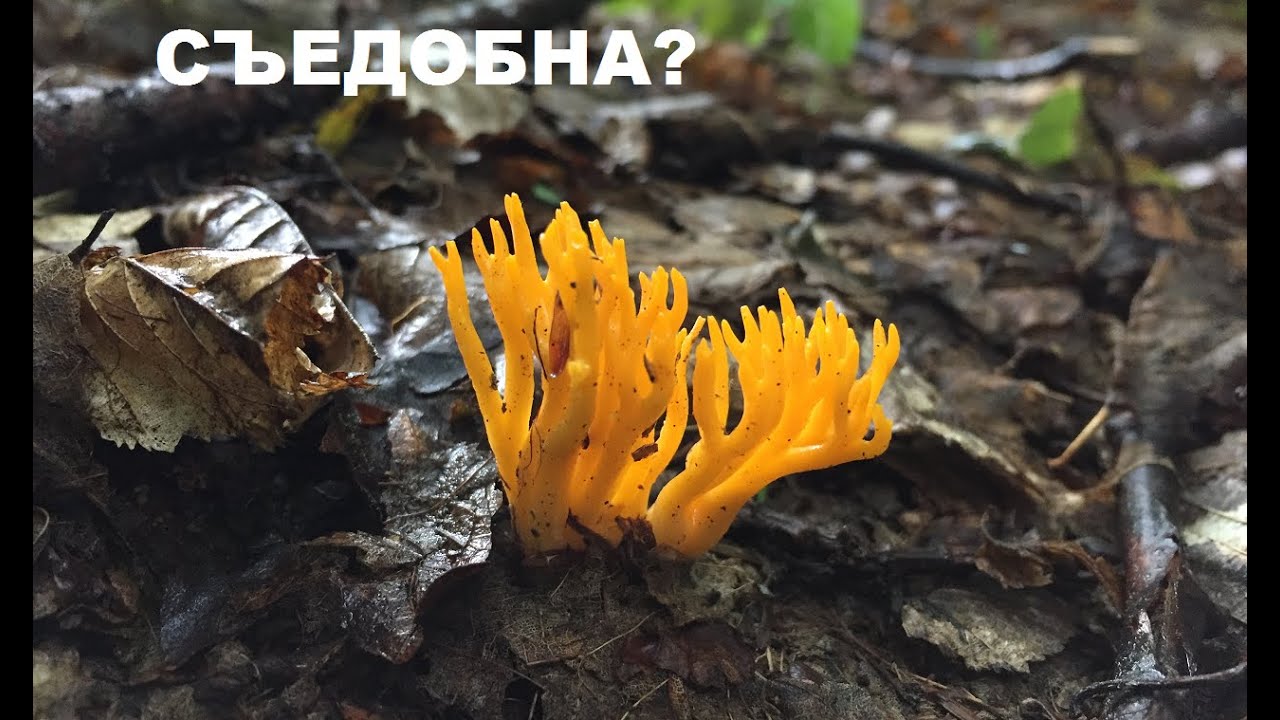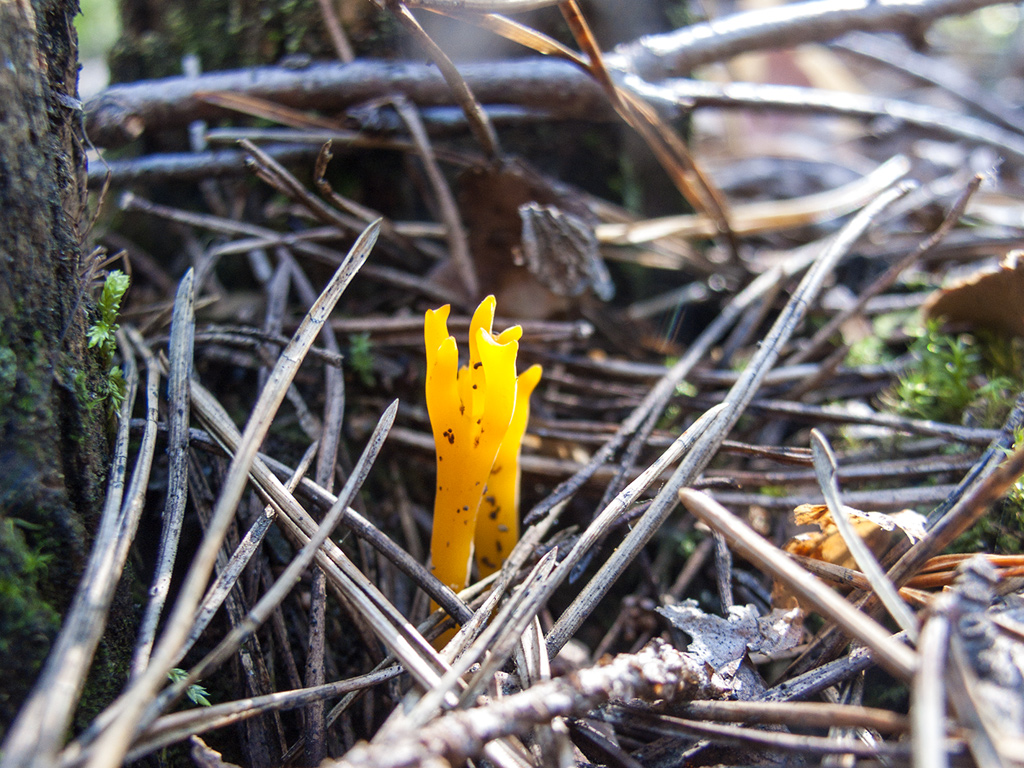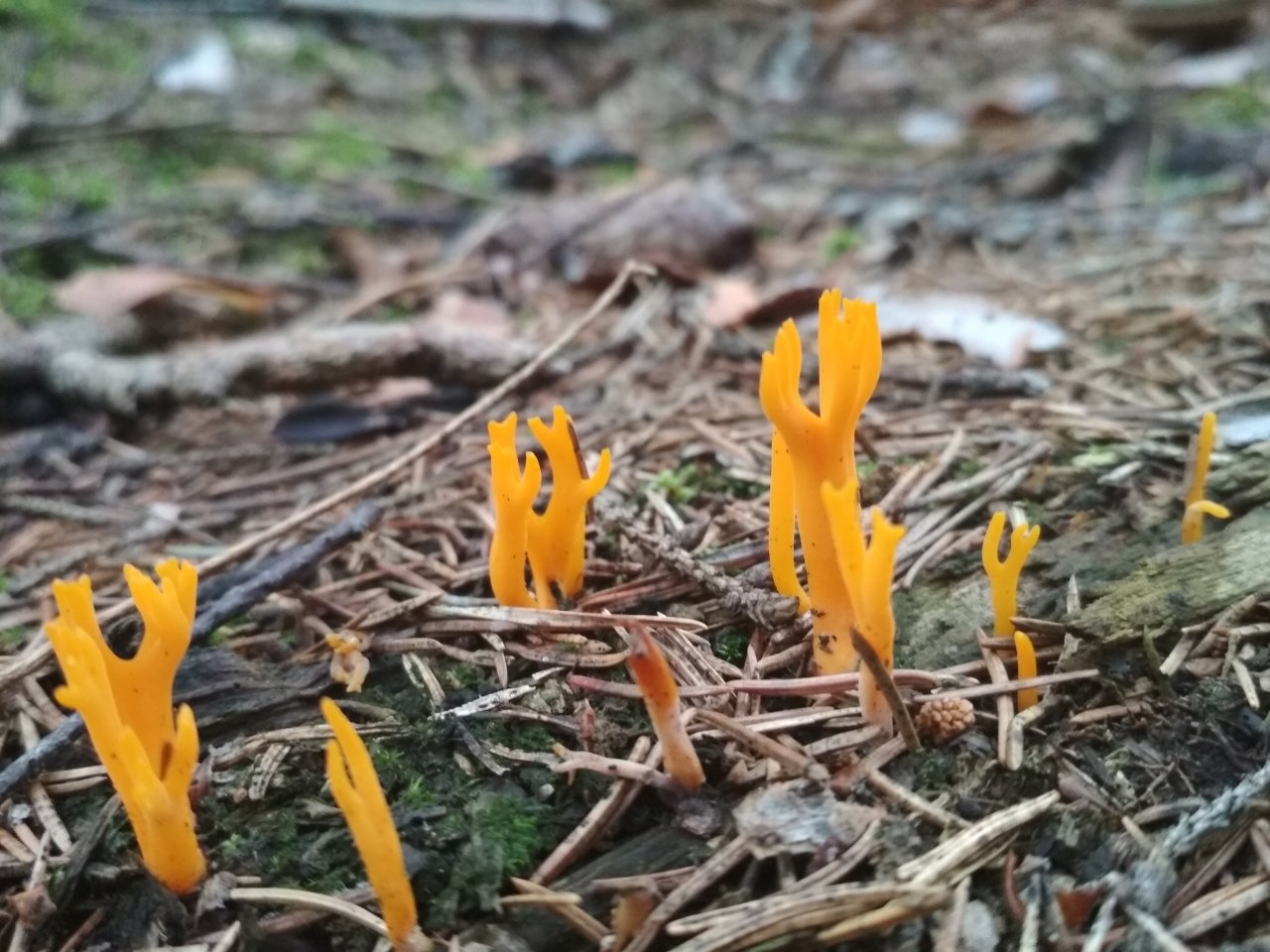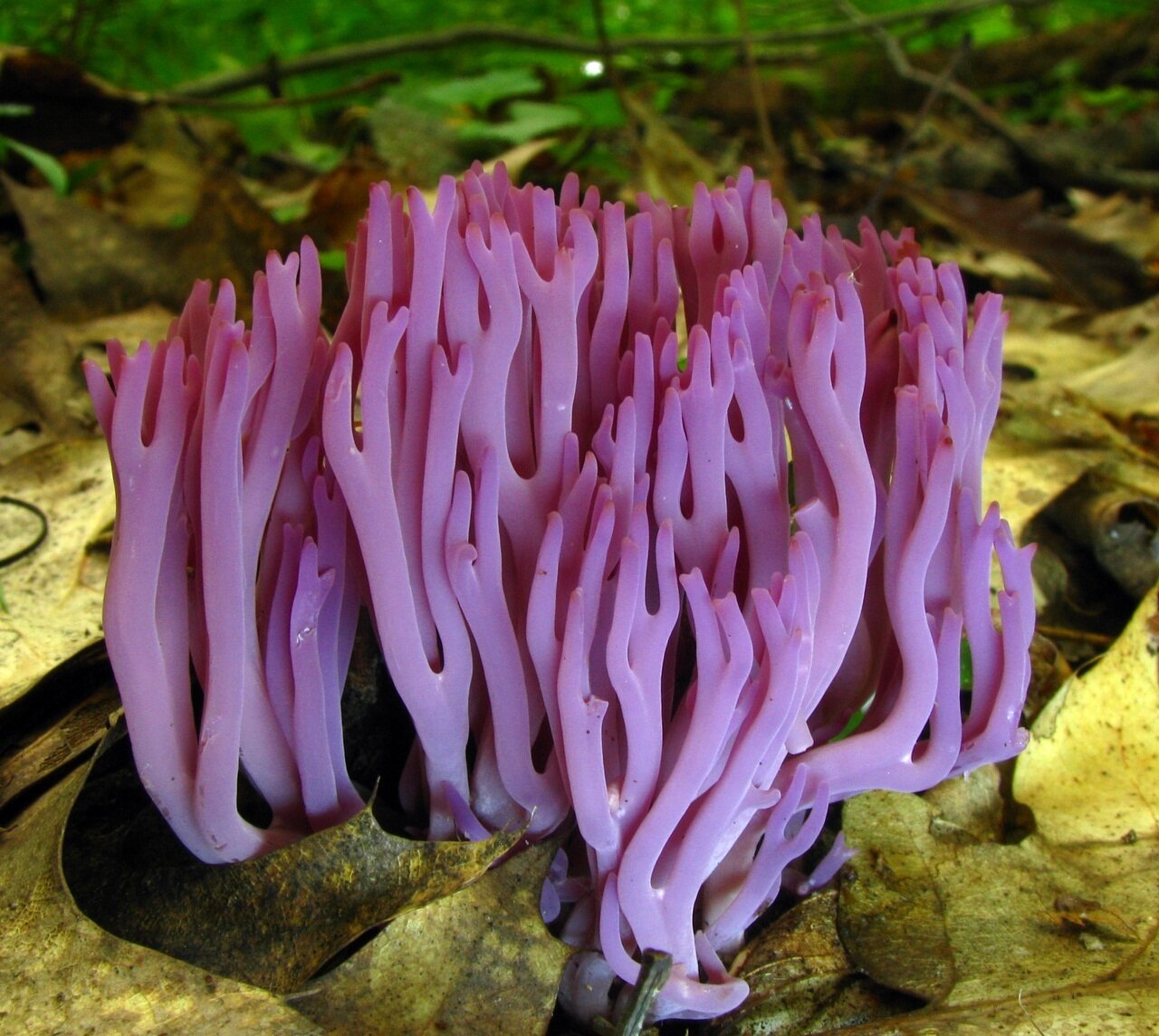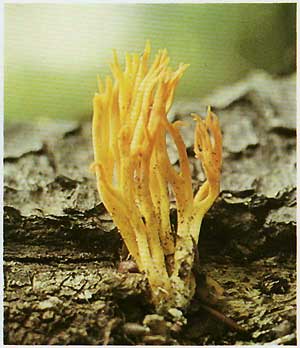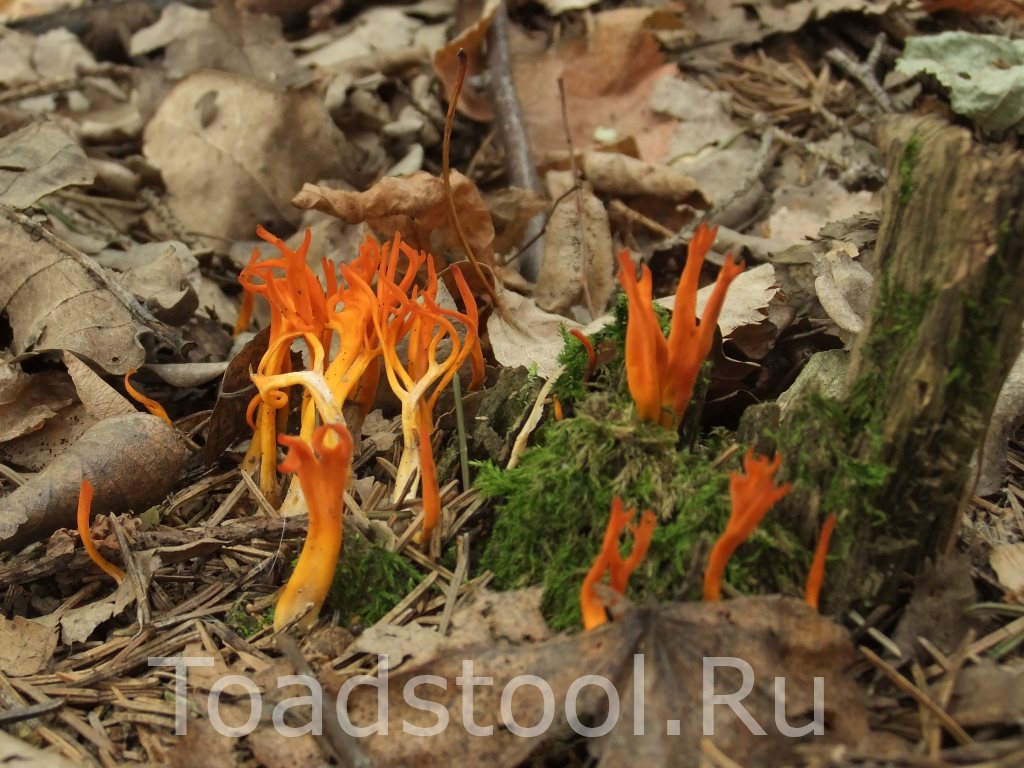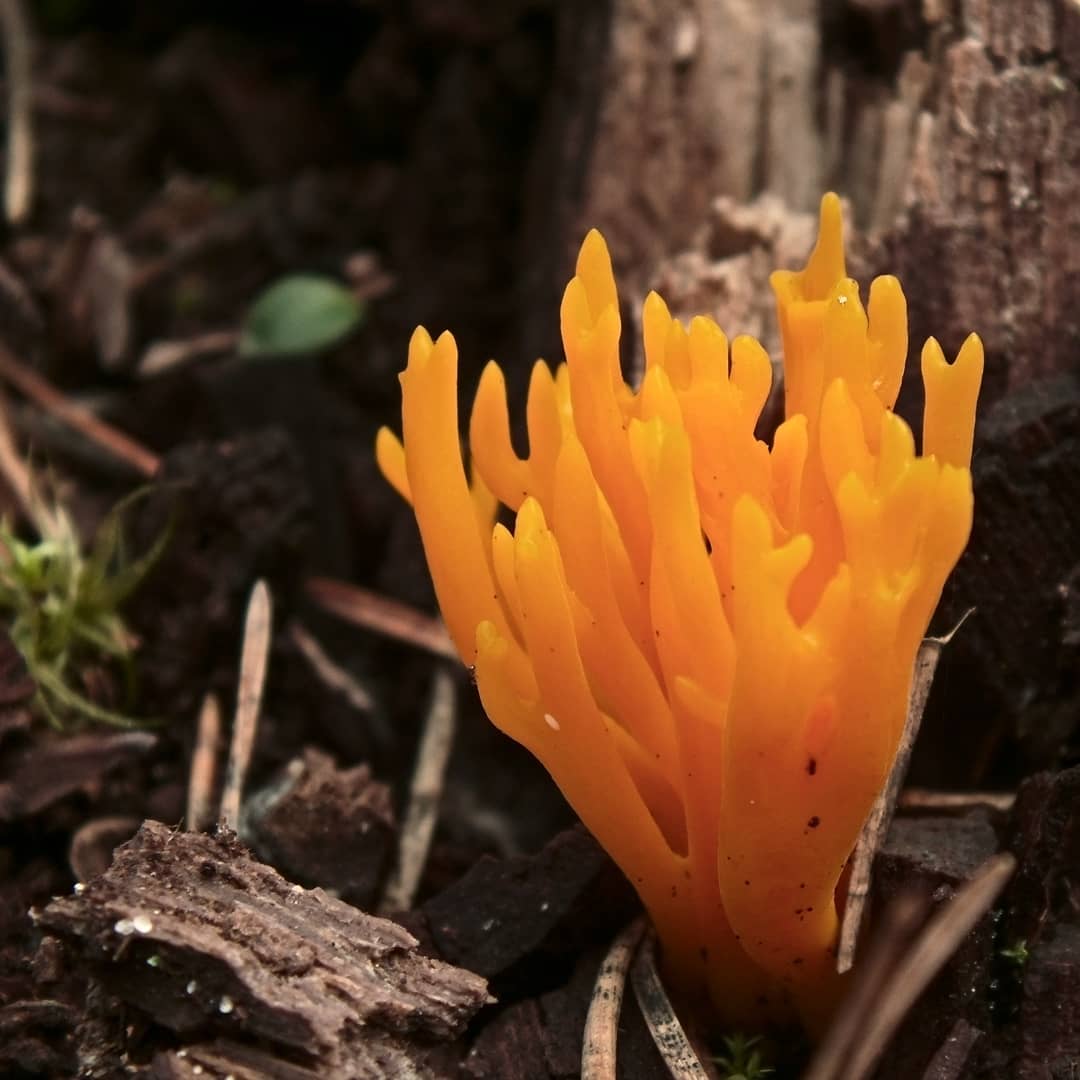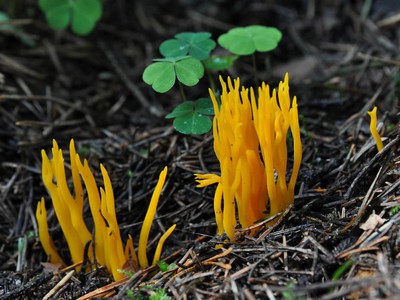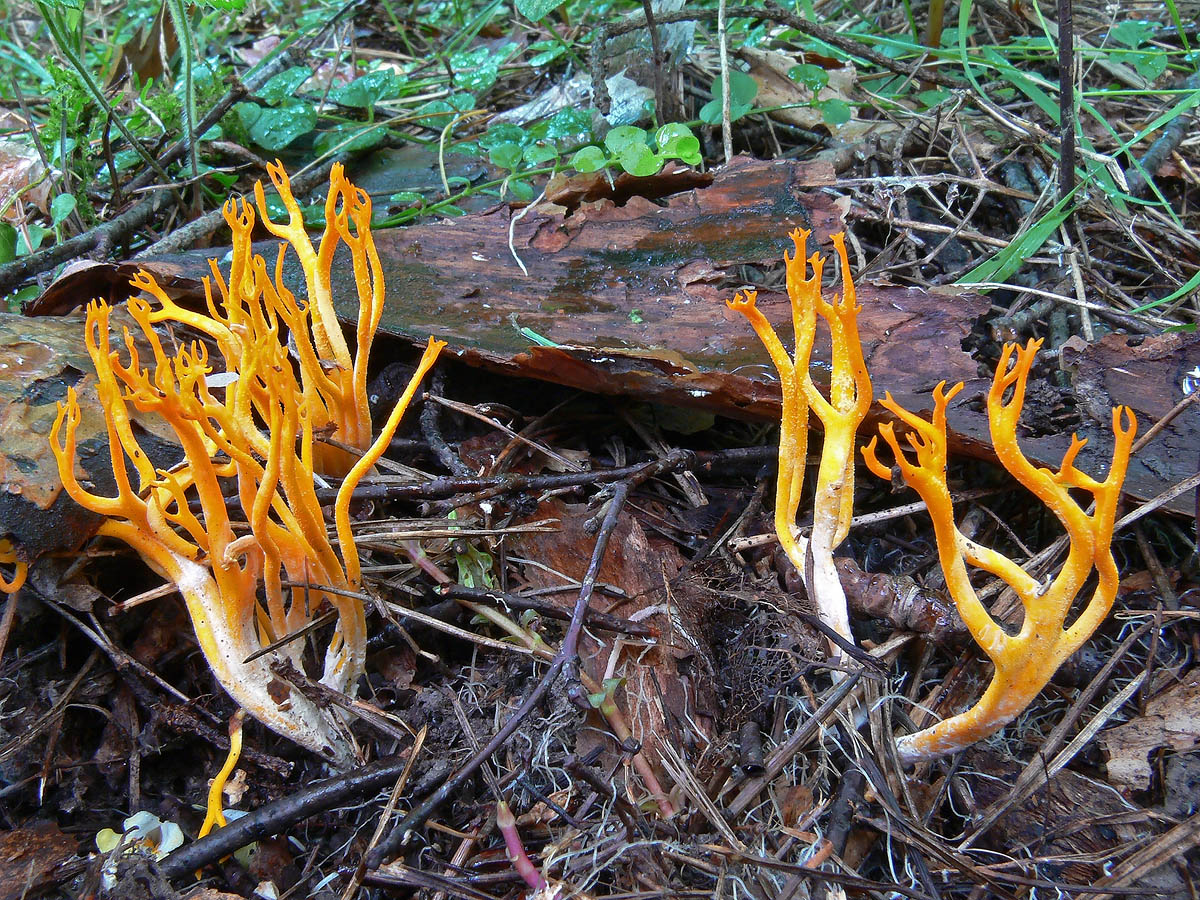Description of gummy calotsera
The shape of the fruit body is branch-like. Its height reaches 3-6 centimeters, and its diameter is 3-5 millimeters. The fruiting body is weakly branched, when it branches as much as possible, it becomes like a broom, and if it does not branch, it looks like a stick with a pointed Rogulskaya at the tip.
The color of the fruiting body is orange or egg-yellow. The surface of the mushroom is sticky. The pulp is rubbery-gelatinous, orange in color, odorless and tasteless. The spore powder may be slightly yellowish or colorless. Spores form on the entire surface of the fruiting body.
Spreading deer horns
These mushrooms grow on a woody substrate and on wood immersed in the soil and strongly decomposed. They meet in small groups or singly. They prefer conifers, especially spruce.
Brown rot develops on the wood due to these fungi. Reindeer horns are found almost everywhere. They bear fruit from July to late autumn.
Edible calocera gummy
It is not accepted to talk about the edibility of these mushrooms, they have an unsightly appearance of something gelatinous, and they grow in damp places, on a rotten substrate, it is unlikely that you will want to try them.
But calocera can be eaten without harm to health, although its taste is very dubious. Culinary experts believe that reindeer horns are of poor quality, since their flesh is rubbery. For food purposes, these mushrooms are very rarely harvested. Still, they can be boiled, dried and fried.
In Bulgaria, these mushrooms are boiled and used to decorate cold snacks, as they have a rich, beautiful color.
Only young fruit bodies are collected, which have not yet begun to dry out and brown.
The healing properties of Calocera gum
These mushrooms contain a serotonin precursor, hydroxytryptophan and melatonin. Polysaccharides secreted from the gummy calocera stop the growth of sarcoma.
Interesting information about deer horns
Although gummy calocera has an outward resemblance to horns, and it is called "horned", it has nothing to do with these mushrooms. The related species of gummy calocera are auricularia, gelatinous pseudo-beetle mushrooms, tremors and other gelatinous fungi.
Other mushrooms of this genus
Horny calocera is a conditionally edible mushroom. The fruiting body is clavate or horn-shaped. Its height does not exceed 1.5 centimeters, and its thickness is 0.1-0.3 centimeters. Fruit bodies can be solitary or accrete at the base, as a rule, they do not branch. The color of the fruit body is egg or light yellow, and in older specimens it fades to a dirty orange. The consistency is rubbery.
The horny calocera grows everywhere. Mushrooms settle on damp, strongly rotted deciduous and sometimes coniferous wood. They bear fruit from July to November.
.
Quote post by oxymoron999Sticky calocera is a mushroom ... Sticky calocera (Calocera viscosa) Fruit body: Vertical "branch-like", 3-6 cm high, 3-5 mm thick at the base, slightly branched, at most resembling a homespun broom, at least - a stick with a pointed Rogulskaya on end. Color - egg yellow, orange. The surface is sticky. The pulp is rubbery-gelatinous, surface color, without noticeable taste and smell
Spore powder: Colorless or slightly yellowish. Spores are formed over the entire surface of the fruiting body.
Distribution: Grows on woody substrate (including submerged in the soil, strongly decomposed) singly or in small groups, preferring coniferous wood, especially spruce. Promotes the development of brown rot. It is found almost everywhere from early July to late autumn.
Edibility: For some reason it is not accepted to talk about this in relation to Calocera viscosa. Therefore, the mushroom must be considered inedible, although, it seems, no one has tested this.
Notes: There is something unnatural in the gelatinous "tremors" that suddenly acquired a vertical shape and are aiming for something there with a sharp mustache in the damp and still air. It seems that the calocera studied underwater mushroom, imitating the predatory anemones in everything. And the result is a gelatinous broom, concentrating on sweeping the indifferent sky.
Rogat: medicinal properties and other facts
Medicinal properties: Polysaccharides isolated from mycelial culture stop the growth of sarcoma-180 and Ehrlich's carcinoma by 90%. The mushroom contains 5-hydroxytryptophan, a precursor of serotonin and melatonin.
Collecting and harvesting rules: Collect fresh fruit bodies that have not begun to dry out or brown. Alcohol infusions are used.
Interesting Facts. Despite the obvious resemblance to horns, this mushroom has nothing to do with them. It belongs to shivering fungi, its relatives are shivers, gelatinous pseudo-jelly, auricularia and other gelatinous heterobasidiomycetes.
Kalocera sticky
By the appearance of this mushroom, one can think that its habitat is the seabed. Indeed: the species resembles coral thickets or algae that got to the land by some unknown road. The second thing that comes to mind is the developed buds of sprouted potato tubers. Even so - even so, the gummy Kalocera is definitely an extraordinary inhabitant of the forest floor.
The fruit body is elongated, vertical, egg-colored with shades of ocher, from time to time slightly reddening. Kalocera sticky achieves 5 - 6 cm in length and up to a centimeter in diameter. The fruiting bodies of the colony willingly coalesce at the base and continue to grow in a small "bush". At the apex, the body bifurcates into pointed processes, forming two or three typical spines. Spores form on the entire surface of the fungus. The pulp is gelatinous, the mixture resembles rubber, the color is slightly lighter than the surface layer. Kalocera has a "raw" rotten smell and a slightly sweet taste.
Kalocera sticky grows in large colonies, sometimes one by one, on the remains of putrefactive tree species. Often for outsiders it seems that this mushroom can grow on the soil, but this is not so: under the soil layer there will certainly be a half-rotten log or the remains of a stump. Kalocera is the causative agent of brown rot on commercial tree species.
Of the similar mushrooms, it is necessary to note the Horned mushrooms, which quite well imitate the appearance of the calocera, but upon detailed study they differ in the structure of the pulp and taste with aroma.
Kalocera sticky bears fruit throughout the summer, picking up the warm days of spring and autumn.
Based on the beliefs of edibility, there are different ideas about Kalocera gummy. Some sources consider it edible, but are silent about its likely processing, others do not mention it at all in the lists of edible mushrooms. But this mushroom also did not get to the poisonous ones. It is believed that due to its small size and rarity, the mushroom never got its own place in the culinary range, and is considered inedible.
Edible coral-like mushrooms with a white and yellow body
Ungulate horned (Ramaria botrytis).

Family: Gomphaceae.
Season: August - September.
Growth: singly and in groups.
Description:
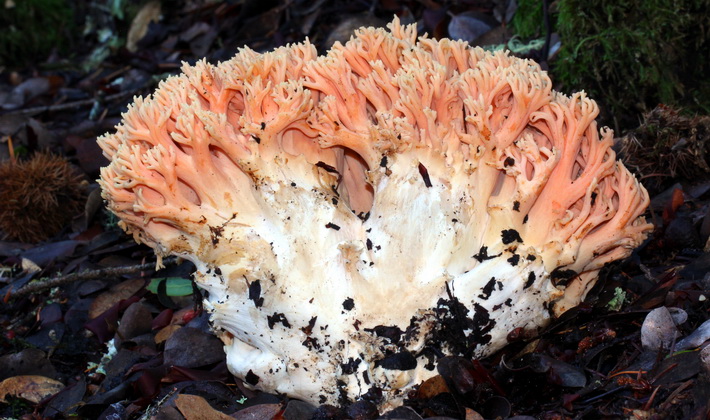
The branches are thick, tapering upward, their ends are cut off, at first reddish, brown leathery by old age.

The leg is massive, dense, whitish.
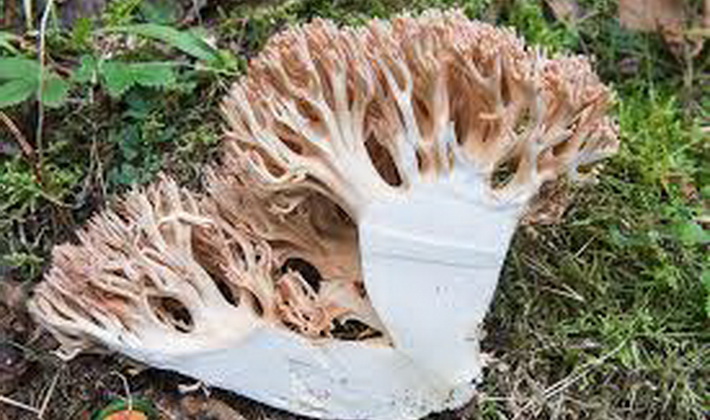
The pulp is brittle, whitish-yellowish, with a pleasant smell and mild taste.
This coral-like mushroom is edible at a young age. Requires preliminary boiling.
Ecology and distribution:
Grows in deciduous and mixed forests, especially near beeches. It is rare.
Clavulina cristata
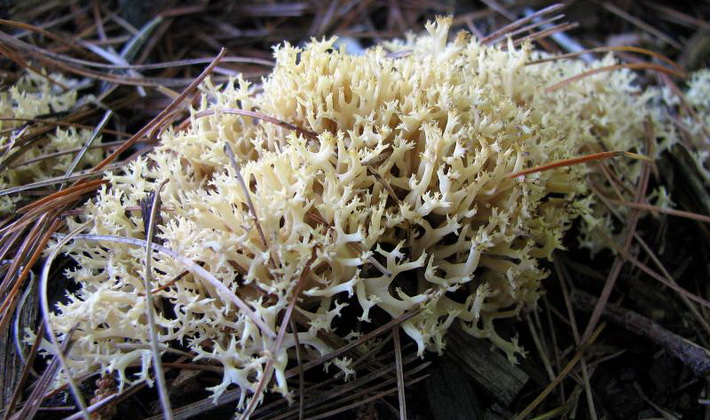
Family: Clavulinaceae
Season: mid July - October
Growth: singly and in groups
Description:

The branches are pointed, with lobed flat comb tops. The branches of this mushroom are like white or cream-colored corals.
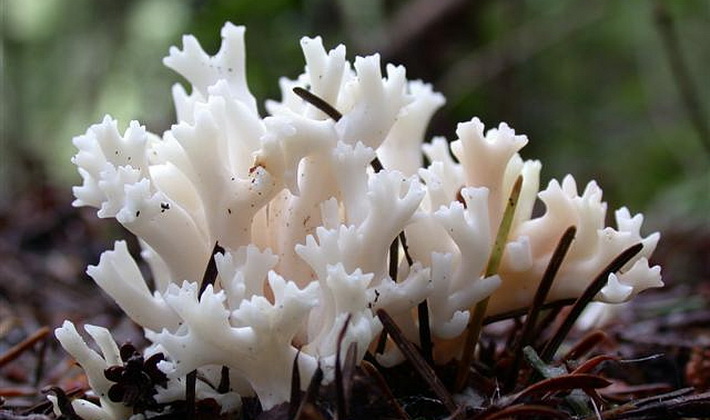
The fruiting body is bushy, branched; the base forms a short, dense stalk.

The pulp is fragile, light, without a special smell, sometimes with a bitter aftertaste.
Poor quality edible mushroom.
Ecology and distribution:
It grows in deciduous (with birch), more often coniferous and mixed forests, on litter, on soil, in grass.
Curly sparassis (Sparassis crispa).
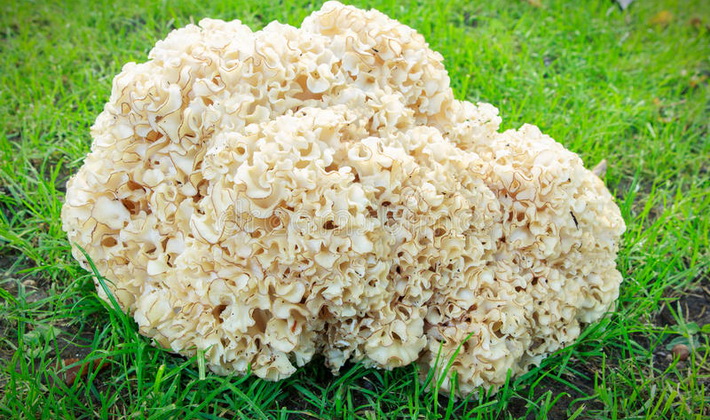
Family: Sparassidaceae.
Season: August - October.
Growth: single.
Description:
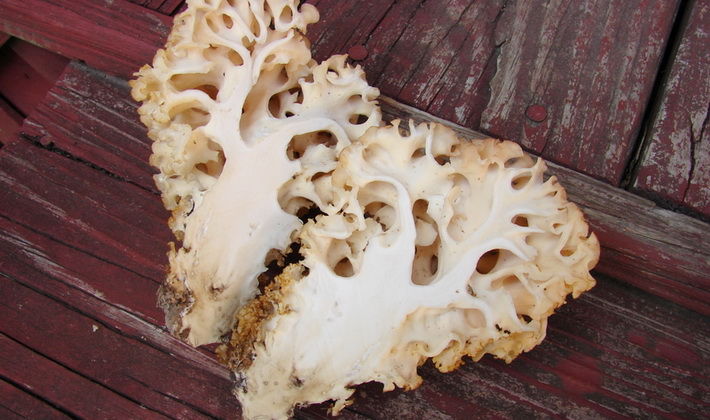
The pulp is brittle, white, with a nutty taste. The leg is thick, deeply buried in the ground, whitish or yellowish.
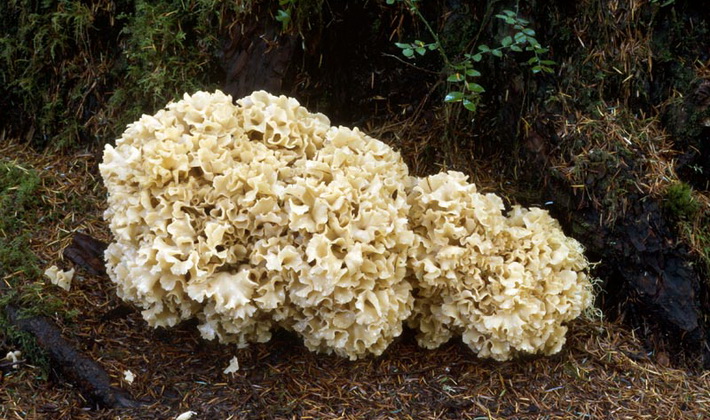
The fruit body of this fungus is like a yellow or white coral, irregularly spherical in shape, consists of many branched wavy plates. One of the surfaces of the plates is spore-bearing.
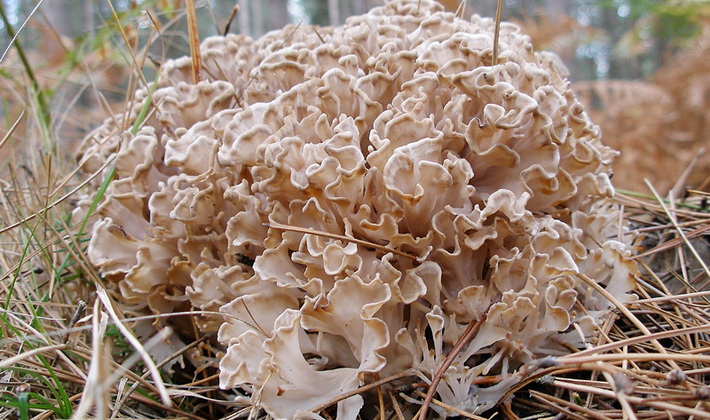
The leg is thick, deeply buried, whitish or yellowish.
Ecology and distribution:
It grows on roots, at the base of trunks, less often on fresh stumps of coniferous trees (mainly pine) in old-growth coniferous and coniferous-deciduous forests.

